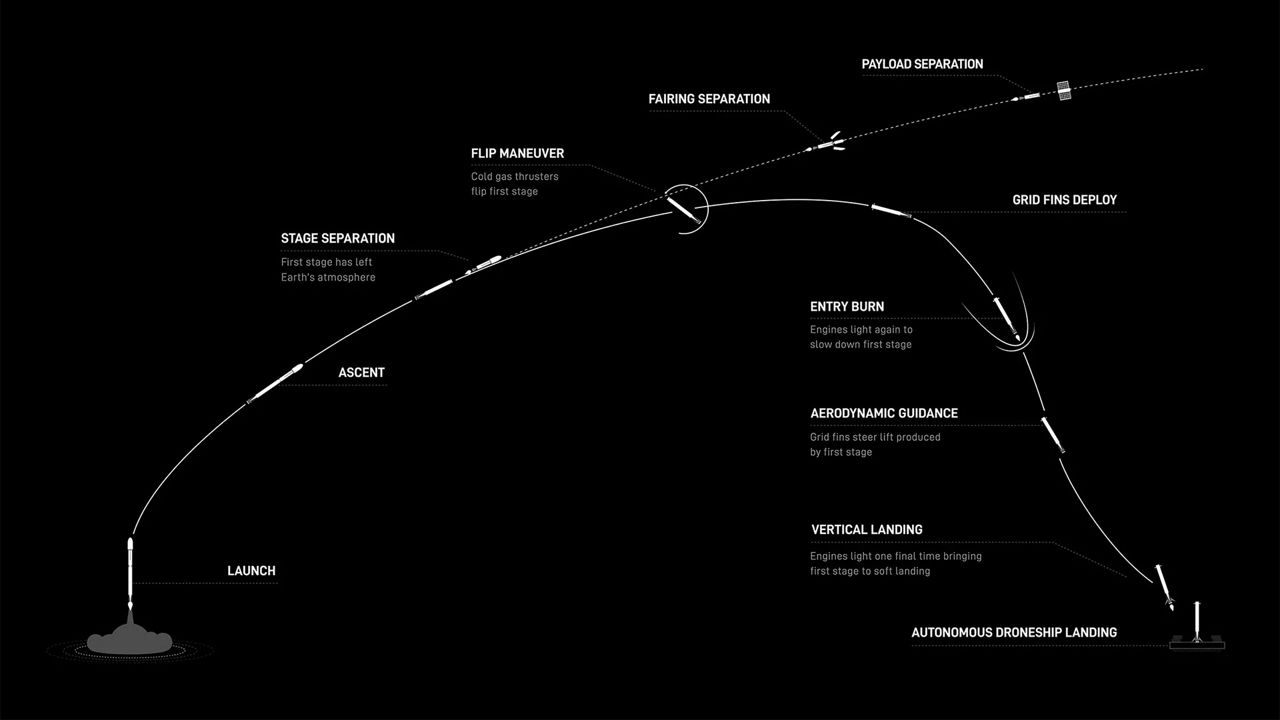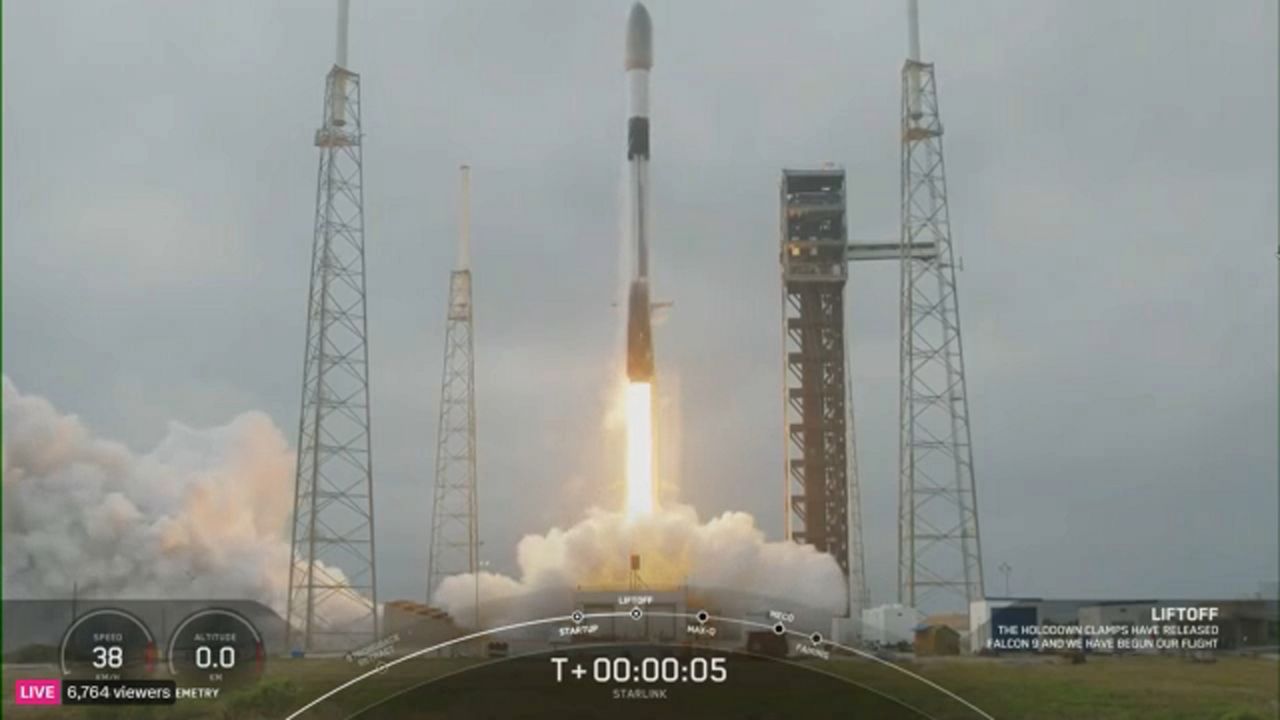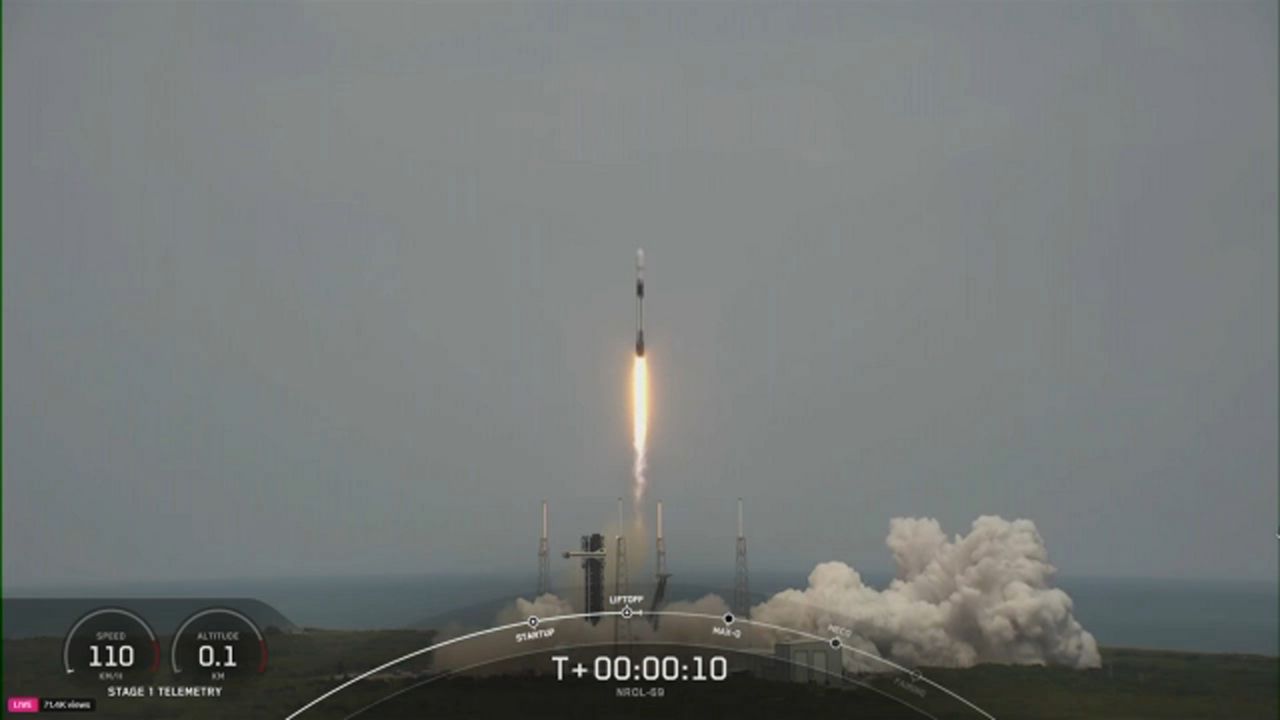CAPE CANAVERAL SPACE FORCE — Despite cloudy skies, SpaceX launched more than two dozen Starlink satellites on Thursday morning.
What You Need To Know
- Starlink 6-40 mission left Space Complex 40 at Cape Canaveral Space Force Station
- More than 20 Starlink satellites will go into low-Earth orbit
SpaceX’s Falcon 9 rocket sent up the Starlink 6-40 mission from Space Complex 40 at Cape Canaveral Space Force Station at 10:30 a.m. ET, stated by the company.
The 45th Weather Squadron gave an 85% favorable forecast for Thursday’s launch, with the only concern being liftoff winds and the cumulus cloud rule.
If a backup launch attempt was needed, it would have been on Friday at 10:04 a.m. ET, according to SpaceX.
The history of the first-stage booster
The Falcon 9’s first-stage booster B1076 used for the Starlink 6-40 mission already has 10 successful missions.
- CRS-26
- OneWeb Flight 16
- Intelsat IS-40e
- Starlink Group 6-1 mission
- Starlink Group 6-3 mission
- Starlink Group 6-6 mission
- Starlink Group 6-14 mission
- Starlink Group 6-21 mission
- SES O3B-mPOWER
- Ovzon-3
After the first-stage separation was completed, old B1076 landed on SpaceX’s droneship Just Read the Instructions in the Atlantic Ocean.
After a quick leap, Falcon 9’s first stage has completed its 11th mission, landing on the Just Read The Instructions droneship in the Atlantic Ocean pic.twitter.com/OFrx4S2zbj
— SpaceX (@SpaceX) February 29, 2024

About the mission
Heading to low-Earth orbit, SpaceX looks to launch a batch of 23 Starlink v2-mini satellites of their second-generation high-speed, low-Earth orbit internet satellite constellation.
These satellites provide global broadband internet access, bringing internet to the hardest to reach places in the United States and abroad, stated Starlink, which is owned by SpaceX.
Before the launch, Harvard-Smithsonian Center for Astrophysics’ Dr. Jonathan McDowell recorded the following information about the Starlink satellites.
- 5,504 are in orbit
- 5,442 in working order
- 4,782 are in operational orbit








